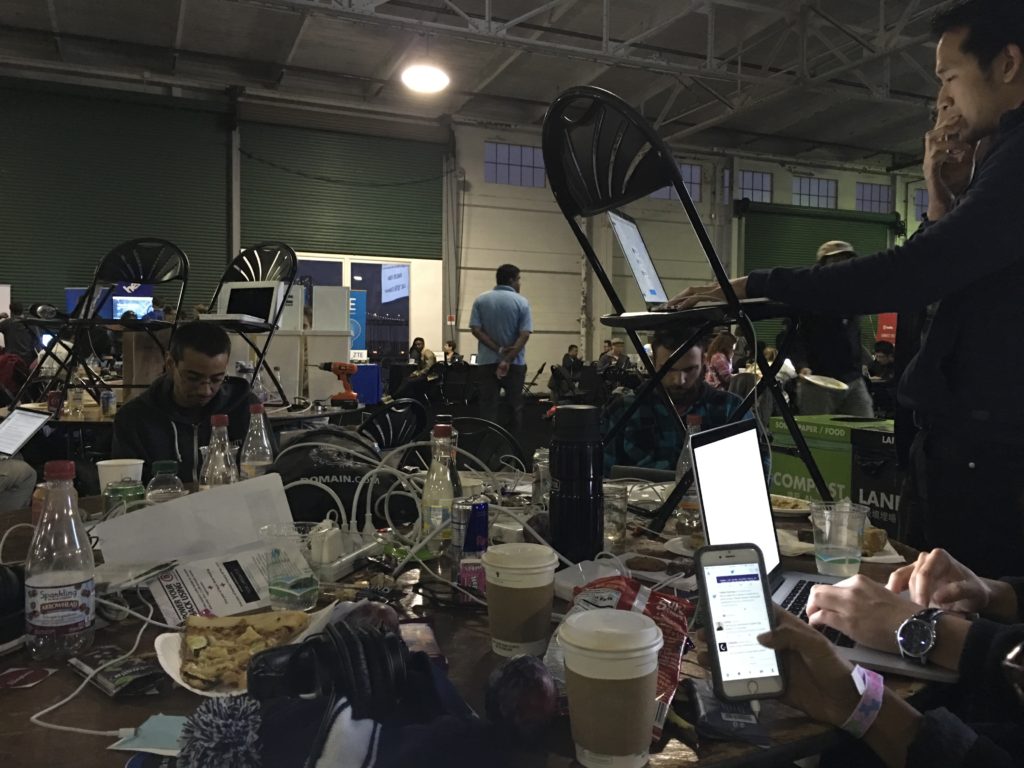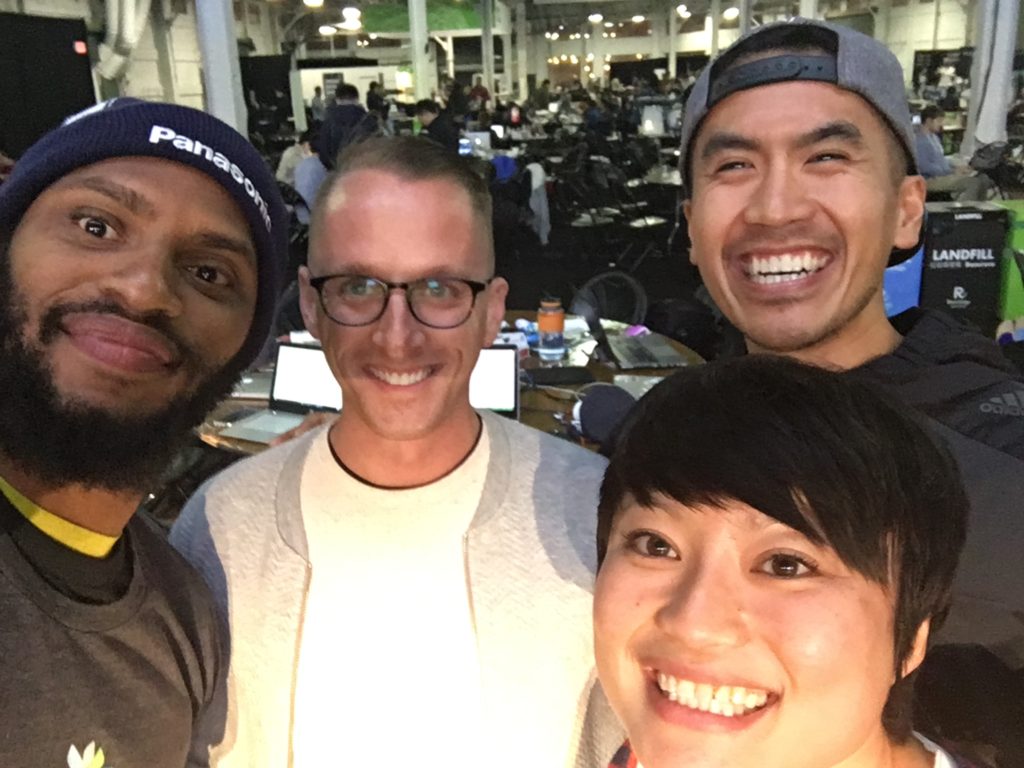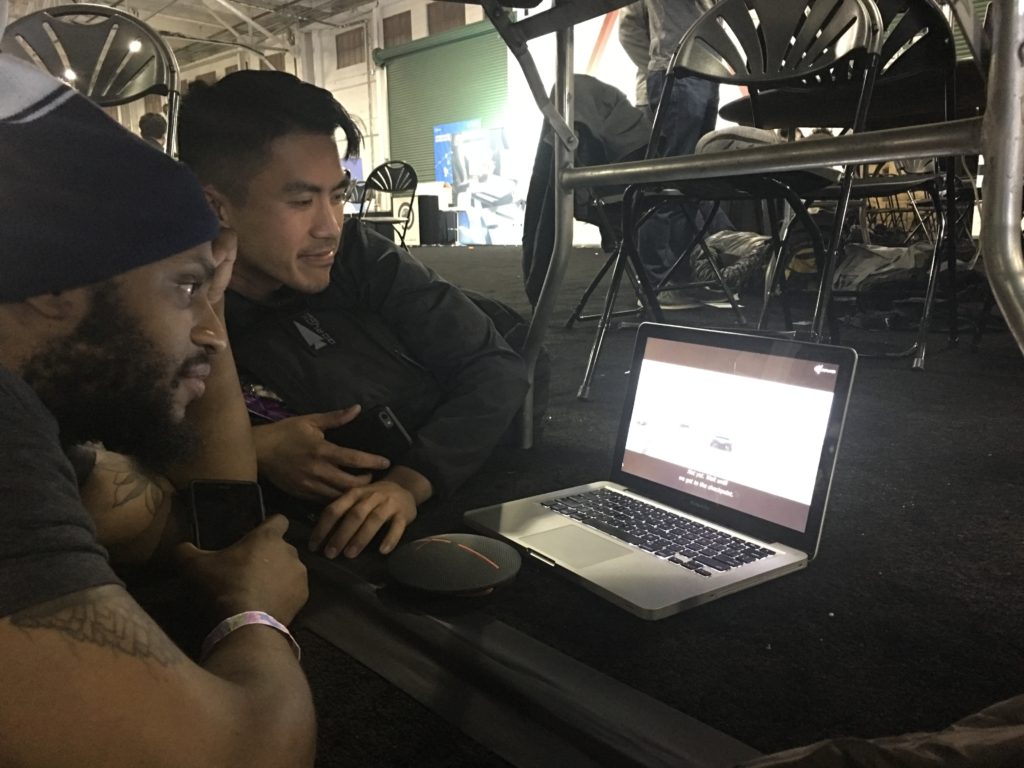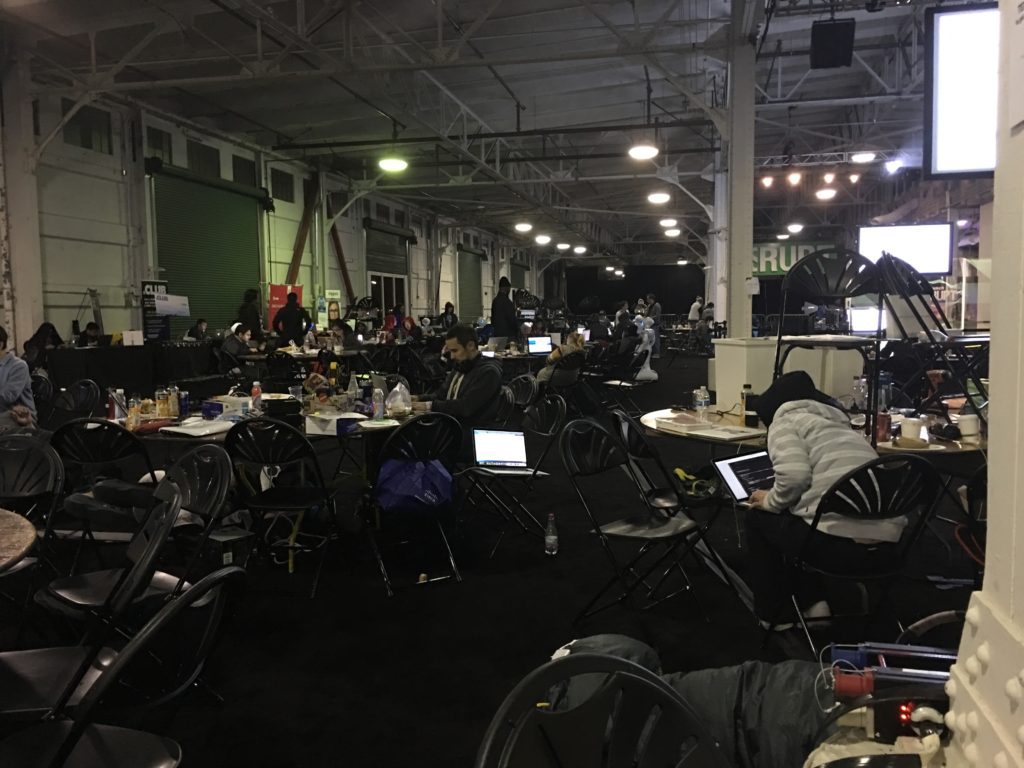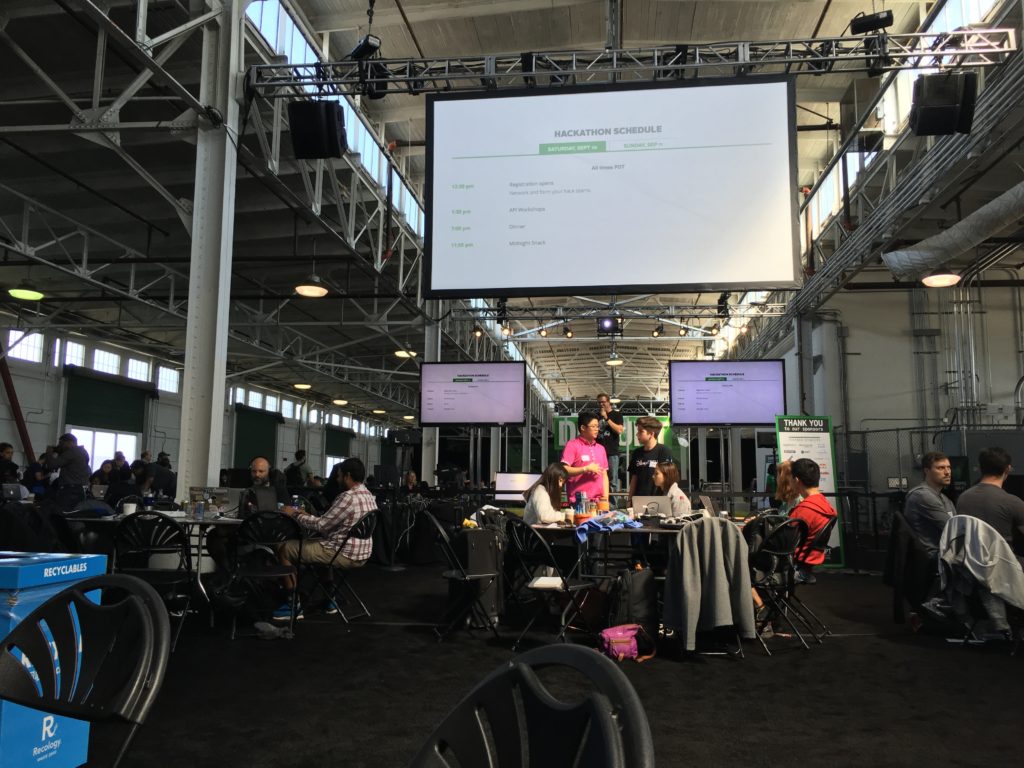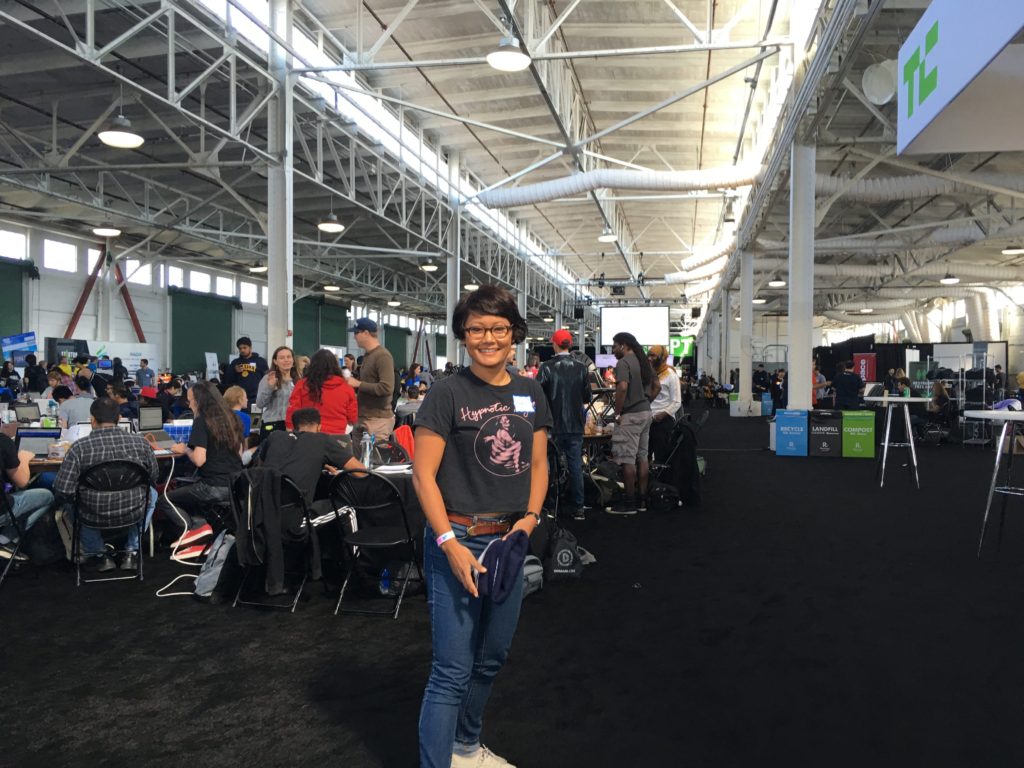I forgot to mention it last week, but I finally attended my first hackathon! Ryan helped me score tickets to TechCrunch Disrupt’s Hackathon, a 24 hour test of “coding endurance.” This was the big time! I pulled together a small team of San Francisco Learn-ers, plus my roommate.
I didn’t have a concrete goal for the event. Mostly I just wanted to take it all in and have fun, meet some new people and feel inspired. Our team ended up pivoting at the last minute and running out of time to finish our project, but I did learn a ton just by being there. So, in no particular order of importance, here are some tips for your first hackathon:
- Don’t go hungry – Usually food and drinks are available, but just in case there’s nothing to your liking, pack some backup snacks and drinks.
- Be comfy – Wear layers. Wear stretchy pants. It might get cold if they jack up the AC. In our case, the event was held in a huge drafty refurbished pier that was right on the water. Cold wind blew through the open doors at all hours. My classmate who was only in a t-shirt was miserable by nightfall.
- Decide whether you’re going to sleep over and if so, bring a sleeping bag! I felt like an idiot at first for bringing mine, but as the hours crept on, the sleeping bags came out. Some people even brought cots!
- If possible, form your team beforehand, and pick a team leader. It seems like it naturally comes about based on whose idea is used, but it helps so much having one person keeping everyone else on task.
- Possibly more important, come to the event with project ideas, and an idea of what technologies you’d like to use. We spent wayyyy too long just bouncing around ideas.
- There were some great API workshops at the hackathon, but you would have a leg up if you spent the day before the event brushing up on the available APIs. You can find this information on the hackathon’s website. Just check out the rules or sponsors section.
- GitHub + Trello = Organization! We immediately created a repo for our work, but having a Trello board would have helped us keep tabs on the state of the project. GitHub has a new projects feature, which is very similar to Trello, so I’m looking forward to using that in my next group project.
- You may be going HAM on your project, but be sure to make some time to network! Chat with the reps manning the booths, do silly things to get schwag (I jumped through so many hoops with Cisco Spark to score pizza for my team), meet your neighbors… and of course be nice to the poor staff working the event.
- Don’t be afraid to change your project idea at the last minute. All the cool kids are doing it. We changed ours at oh… approximately 7pm.
- Your project doesn’t have to be perfect. Just get the damn thing working enough to show it off. Don’t make it any more complicated than you need to!
Here are some more pictures from the event:
